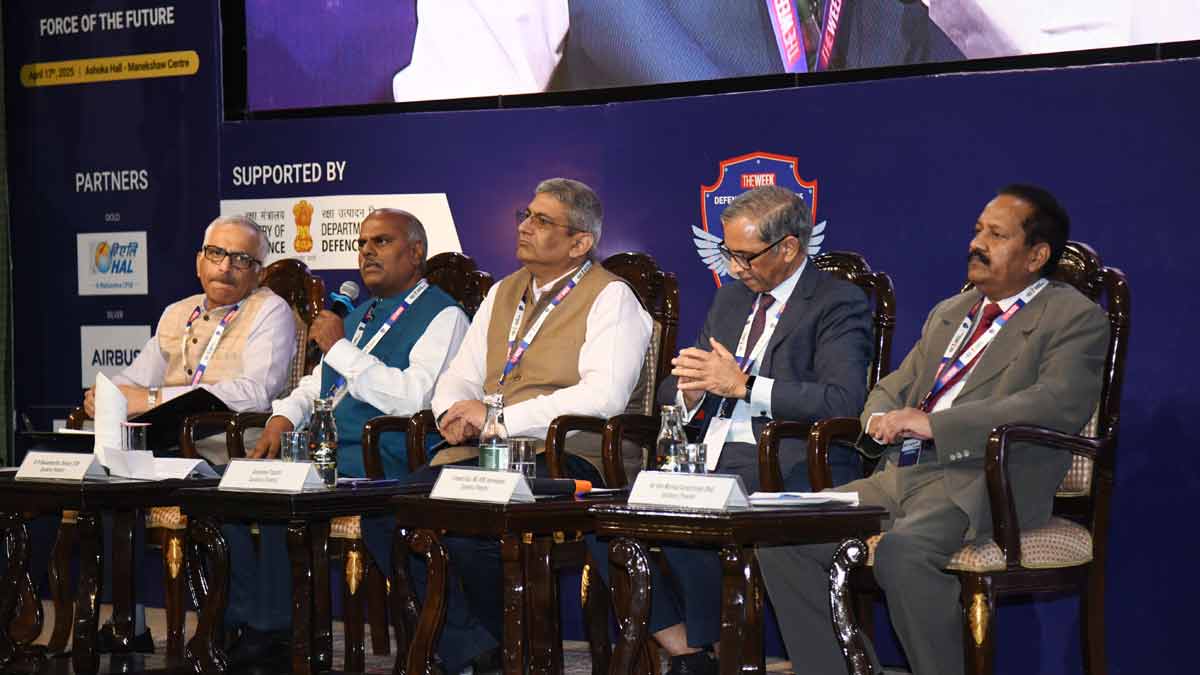Building jet engines in India: Experts chart post-Kaveri roadmap at THE WEEK Defence Conclave
 (From left) Air Marshal Ajay Kumar Arora (retd), former Air OIC Maintenance (M), Dr S.V. Ramanamurthy, Director, Gas Turbine Research Estb (GTRE), Anshuman Tripathi, ex-adviser, National Security Advisory Board (NSAB), V. Venkat Raju, MD, VEM Technologies, Hyderabad and Air Vice Marshal Suresh Singh (retd) during the panel discussion at THE WEEK Defence Conclave 2025, in New Delhi | Sanjay Ahlawat
(From left) Air Marshal Ajay Kumar Arora (retd), former Air OIC Maintenance (M), Dr S.V. Ramanamurthy, Director, Gas Turbine Research Estb (GTRE), Anshuman Tripathi, ex-adviser, National Security Advisory Board (NSAB), V. Venkat Raju, MD, VEM Technologies, Hyderabad and Air Vice Marshal Suresh Singh (retd) during the panel discussion at THE WEEK Defence Conclave 2025, in New Delhi | Sanjay Ahlawat
The Kaveri engine, developed by DRDO's Gas Turbine Research Establishment (GTRE), had faced several challenges, preventing it from becoming a viable indigenous fighter jet engine for India so far.
At a panel discussion on 'The challenges of the fighter engine. Where do we go after Kaveri?' at THE WEEK Defence Conclave at Manekshaw Centre in New Delhi on Thursday, the panel, moderated by Air Marshal Ajay Kumar Arora (Retd), former Air OIC Maintenance, dissected the factors that hindered the progress of the jet engine and charted the way ahead.
Building fighter engines involves huge investment and a lot of time, and only a few countries have managed to do it successfully. India's Kaveri engine took a long time to build and the delay was attributed to the lack of materials, dependency on exports and testing facilities. However, despite the delays and difficulties, the system was finally made.
Nine full prototype engines and four core engines were built, and 3,217 hours of engine testing conducted. Nonetheless, the LCA Tejas flight operational clearance configuration demands higher thrust than the intended engine requirement. Hence, the Kaveri in the present architecture cannot be integrated. In order to induct with LCA Tejas, a modified engine version is required.
The panellists, Dr Ramanamurthy, director, GRTE, Anshuman Tripathi, ex-adviser, National Security Advisory Board, V. Venkat Raju, MD, VEM Technologies, and Air Vice Marshal Suresh Singh (Retd), agreed that there is a need to build engines in India, learning from the lessons from Kaveri.
They called for a greater synergy between academia, R&D and industry in this regard as India cannot hope for technology transfer from foreign original equipment manufacturers. Co-design and co-development too aren't the options and India needs to develop the engines indigenously.
A consortium with government funding could possibly be the way ahead, according to the panel, with the caveat that the lead partner should not change. According to them, the industry has changed much in the past few years, and now, India is capable of building anything if the right steps are initiated.
One of the most important things in this regard is hiring the right talent and there is no dearth of talent in India, the panellists concurred.
Defence